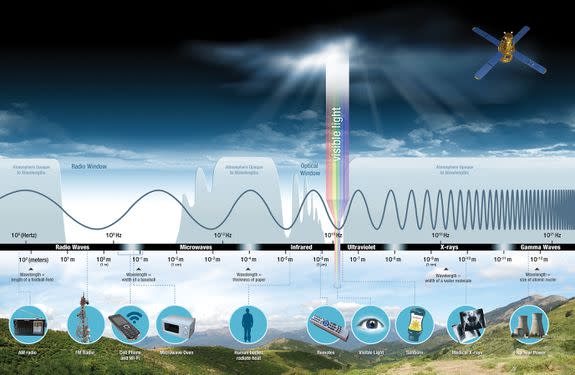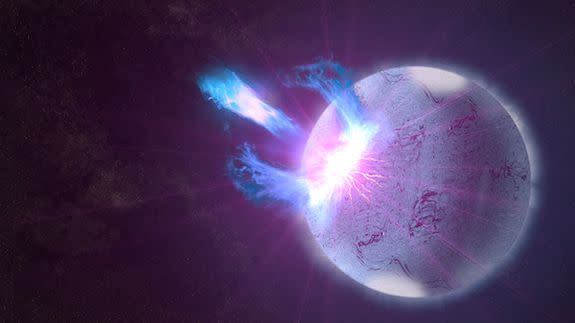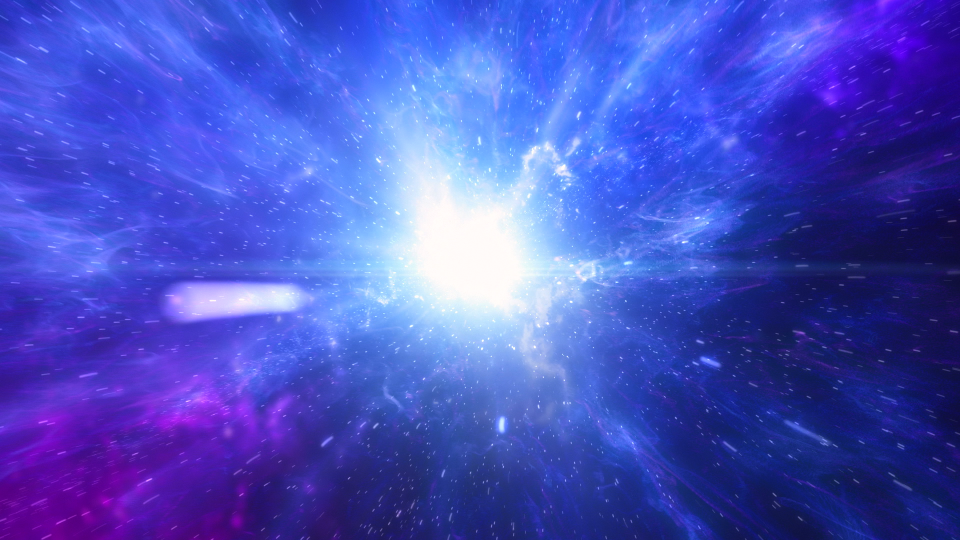Scientists detect a repeating signal from deep space, but its origin is a mystery

To begin, there's zero evidence it's aliens.
But for just the second time, a team of astronomers detected a flash of repeating of radio waves emanating from beyond our Milky Way galaxy. Using a new, sprawling Canadian telescope dubbed CHIME — which is the size of six hockey rinks — scientists identified the short, repeating burst in the summer of 2018 and published their results Wednesday in the journal Nature.
The source of these super distant signals, from some 1.5 billion light years away, is still largely a mystery. What's agreed upon is that for these radio waves to travel millions of light years and arrive at Earth as strong signals, they must have a profoundly potent origin — perhaps a powerful explosion in another galaxy.
"We don’t know what can cause an emission that is that powerful," Shriharsh Tendulkar, an astrophysicist at McGill University and study coauthor, said in an interview.
"We really don’t know what they are," added Marc Kamionkowski, a professor of physics and astronomy at Johns Hopkins University who had no involvement in the study, in an interview. "There is good evidence they’re coming from outside the Milky Way."

Image: nasa
While scientists have detected more than 60 instances of fast radio bursts — which last just milliseconds — this is just the second known signal coming from the same location.
Lots of things in space produce radio waves, and many of these signals hit Earth. "There are all sorts of radio waves arriving at all times," said Tendulkar. The sun is constantly sending radio waves through the solar system. And there's a number of powerful phenomena in the deep universe that blast radio waves into the cosmos — like black holes.
Scientists are certainly deep in thought about where these distant, quick bursts might come from.
"There is a lot of speculation in the astrophysical transient community about the origin of these events and a number of theories have been put forward to explain how they are formed," Kate Maguire, a researcher at the Astrophysics Research Center at Queen’s University Belfast who had no involvement in the study, said over email.
SEE ALSO: How NASA recorded the eerie Martian wind, without a microphone
A leading theory, however, is that the leftover cores of exploded massive stars, known as neutron stars, may be releasing the short, powerful signals, said Maguire.
"Most people forced to bet would say they have something to do with neutron stars," noted Kamionkowski.
Tendulkar agrees: "Neutron stars are our best bet."
When some old, massive stars collapse, they're believed to squish down into a mass the size of a city, forming a neutron star. Consequently, neutron stars are believed to be the densest known objects in the universe. And presumably, they can release a lot of energy.

Image: NASA's Goddard Space Flight Center/S. Wiessinger
One type of neutron star, called a magnetar, is suspected to have a magnetic field trillions of times stronger than Earth's. So when that ultra-dense object changes or ruptures, an extraordinary amount of energy might be unleashed into space.
"It has to be powerful," said Tendulkar.
What's more, these repeating radio waves show signs of "scattering" — which suggests that the waves traveled through a turbulent patch of space filled with interstellar gases. That means the signals likely came from a place where there's a denser clump of stuff, like the remnants of an exploded star (called a supernova), University of Toronto astronomer and study coauthor Cherry Ng said in a statement.
Although there are only hypotheses for how these potent radio waves form, natural cosmic phenomena are the exceedingly likely answer — as opposed to smart aliens.
"I can understand the public's imagination would go that way [aliens], but there are a lot of simpler explanations than extraterrestrial intelligence," said Tendulkar.
Astronomers and astrophysicists are eager for the new telescope, CHIME, to pick up more signals and gather more evidence. Or as Tendulkar put it, to "paint a broader picture" of what might be happening out there, in the depths of intergalactic space.
WATCH: Ever wonder how the universe might end?


